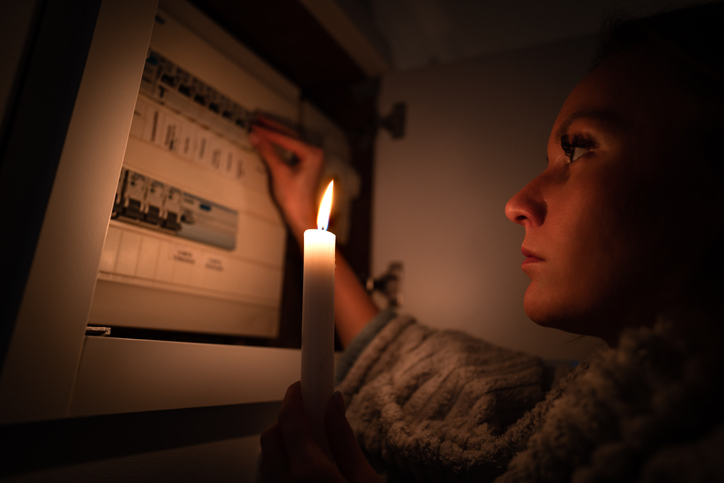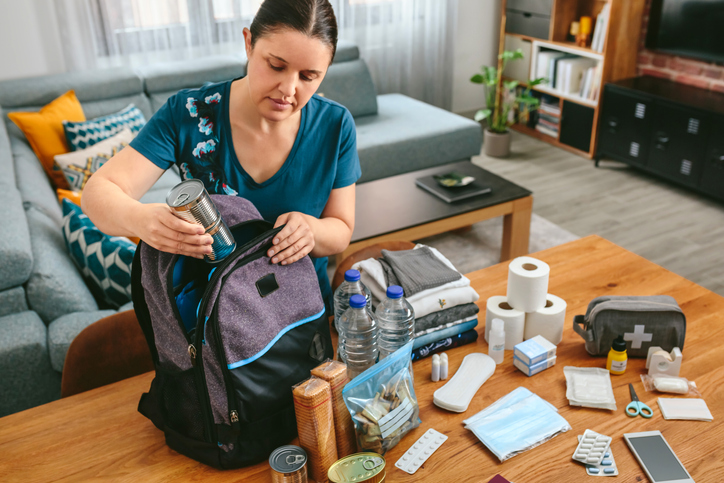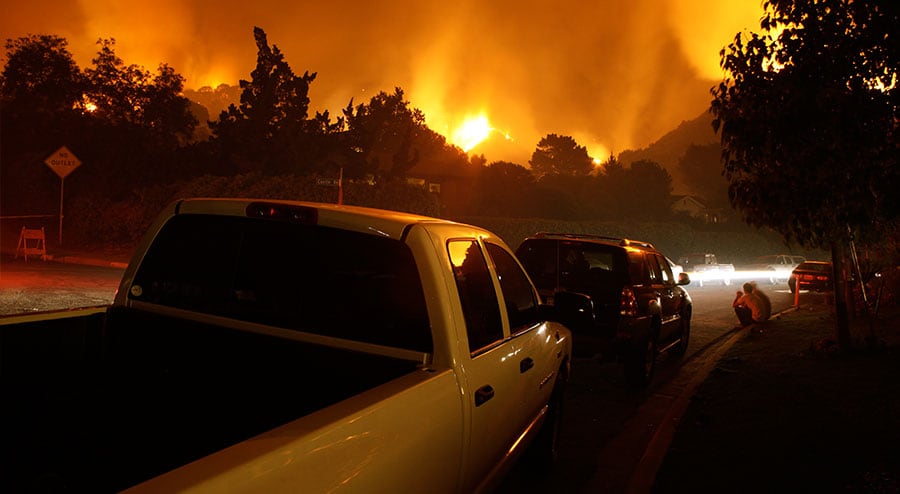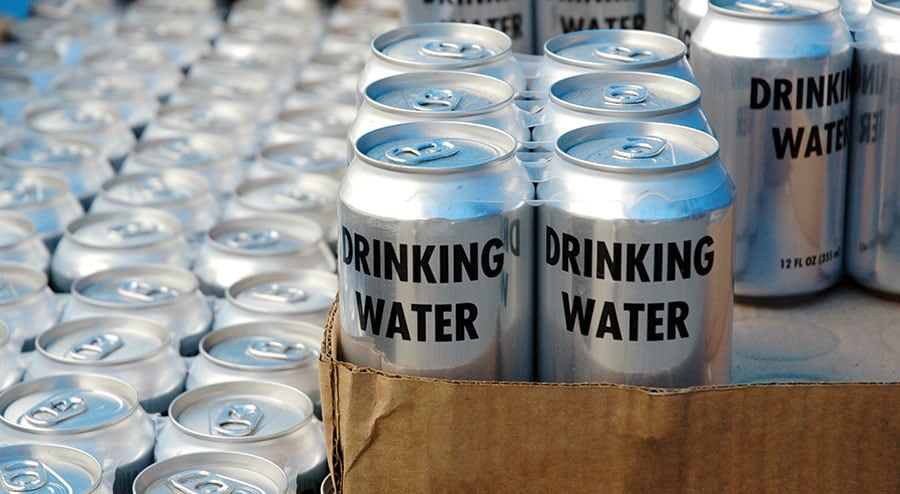In an age heavily reliant on constant access to electricity, the prospect of power outages underscores the importance of home safety and preparedness. Power disruptions, whether due to severe weather, infrastructure failures, or unforeseen circumstances, can leave households vulnerable to a range of challenges. Ensuring the safety and well-being of your family during these periods requires strategic planning and the integration of alternative lighting solutions. By proactively addressing power outage scenarios and implementing comprehensive safety measures, individuals can navigate these situations with confidence, resilience, and the assurance that essential needs will be met.

Power Outage Preparedness: Creating A Safety Plan
Power outages can occur unexpectedly, disrupting daily routines and potentially posing safety risks. Establishing a well-thought-out safety plan is essential to ensure the well-being of your family and pets during such situations. This section delves into the core aspects of creating a comprehensive power outage safety plan.
Significance Of A Power Outage Safety Plan
Recognizing the importance of having a specific plan in place for power outages cannot be overstated. A well-prepared safety plan enhances your ability to respond effectively to unexpected situations, reduces panic, and ensures that everyone in your household knows what to do.
Developing A Comprehensive Home Safety Plan
Begin by assessing your home for potential hazards during a power outage. Identify areas where safety could be compromised, such as stairs, walkways, and sharp corners. Secure heavy furniture that could topple, and ensure that emergency exit routes are clear.
Effective communication is crucial during power outages. Designate a central meeting point within your home where family members can gather. Establish clear methods of communication, such as walkie-talkies, if cell phone networks are unavailable.
Outline procedures for evacuating your home if necessary. Assign roles to family members, ensuring that everyone knows their responsibilities. Develop a floor plan that highlights escape routes and safe zones.
Involving Family Members And Pets In The Safety Plan
Involve all members of your household, including children, in the creation and understanding of the safety plan. Teach them how to respond to alarms, where to find emergency supplies, and how to safely evacuate the house. Additionally, consider the needs of your pets—designate safe areas for them, and include pet-specific provisions in your plan.
Staying Informed: Monitoring Weather Forecasts And Alerts
Remaining well-informed about weather forecasts and emergency alerts is of paramount importance when navigating power outages. Leveraging a range of smartphone apps and communication tools can provide you with real-time updates and critical information, empowering you to make informed decisions throughout the duration of the outage.
Weather apps play a vital role in this endeavor. Apps such as “The Weather Channel” offer comprehensive weather forecasts, radar maps, and timely notifications about severe weather conditions. AccuWeather, another reliable option, not only provides minute-by-minute forecasts but also delivers alerts regarding imminent weather changes and potential hazards.
Incorporating emergency alert apps into your toolkit can significantly enhance your preparedness. The “FEMA App,” developed by the Federal Emergency Management Agency, delivers real-time alerts and valuable insights on various types of emergencies, including power outages. This app equips you with safety recommendations, emergency kit checklists, and localized disaster resources. Similarly, the “Red Cross Emergency App” is an invaluable asset, offering alerts for natural disasters and practical guidance for creating emergency plans, locating nearby shelters, and accessing essential first aid information.
Communication apps also play a pivotal role in keeping you updated. Local government agencies and utility companies often use community alert apps like “CodeRED,” “Everbridge,” and “Nextdoor” to deliver pertinent updates about emergencies and power outages within your specific community. Additionally, leveraging social media platforms like Twitter and Facebook enables you to stay connected with relevant local entities and receive real-time updates and instructions.
For a direct and comprehensive stream of weather information, consider utilizing the NOAA Weather Radio. This service broadcasts continuous weather updates directly from local National Weather Service offices, ensuring you receive accurate and timely information. You can acquire a NOAA Weather Radio receiver or explore apps that offer streaming access to NOAA broadcasts.
Staying connected with local news is essential. Many local news stations provide dedicated apps that furnish up-to-date news, detailed weather forecasts, and pertinent emergency alerts. These apps serve as reliable sources of information, enabling you to stay informed and prioritize safety for yourself and your family throughout power outages.
Regular Maintenance And Testing Of Emergency Supplies
Prepare a well-stocked emergency kit that includes basic necessities to sustain your family for at least 72 hours. Essential items include non-perishable food, water, first aid supplies, medications, flashlights, batteries, a multi-tool, and important documents.
To ensure the effectiveness of your safety plan, regularly inspect and maintain your emergency supplies. Check expiration dates on food and medications, replace batteries in flashlights, and refresh water supplies. Regular drills and practice runs of evacuation procedures with your family will help reinforce everyone’s understanding of the plan.
Essential Items And Alternative Lighting Options
During power outages, having the right tools and lighting sources is crucial for maintaining safety and comfort. This section focuses on various essential items and alternative lighting options that can be employed to navigate through the darkness effectively.
Selecting Appropriate Flashlights For Emergency Situations
Choosing the right flashlight for emergency situations requires careful consideration of several factors. Opt for flashlights that are durable and water-resistant to withstand challenging conditions. Prioritize those with adjustable brightness settings to conserve battery life and provide suitable illumination for different tasks. Seek out models with a long runtime to ensure extended usability during prolonged power outages. Ergonomic design and a comfortable grip are also important for ease of use over extended periods.
Look for renowned brands such as Maglite, known for their durable and high-performance flashlights. Opt for models like the Maglite LED 3-Cell D Flashlight, which combines rugged construction with adjustable brightness settings. For a more compact yet powerful option, consider the Fenix LD22 Flashlight, offering multiple brightness levels and a long runtime. Ergonomic designs from brands like Streamlight also provide comfortable grips, ensuring ease of use during extended periods. Prioritize flashlights with energy-efficient LED technology to maximize battery life and illumination.
Ensuring Reliable Battery Power For Flashlights
Reliable flashlight operation hinges on the availability of power sources. To ensure dependable battery power, stock up on a sufficient quantity of high-quality batteries and store them in a cool, dry place. Consider rechargeable battery options and maintain a backup supply. Regularly check the battery levels in your flashlights and emergency kits, replacing batteries as needed to guarantee their functionality when you need them most.
Evaluating Drawbacks And Risks Of Using Candles
While candles are a traditional source of light during power outages, they come with inherent risks. Open flames can pose fire hazards, especially in homes with children and pets. Candle soot can also impact indoor air quality. If candles are used, place them in sturdy holders and keep them away from flammable materials. Consider flameless LED candles as a safer alternative to achieve a similar ambiance without the associated risks.
Utilizing Solar-Powered Lighting Solutions
Harnessing solar-powered lighting solutions offers a sustainable and reliable source of illumination during power outages. Solar-powered lanterns and lights can be charged during daylight hours and provide hours of light at night. These environmentally friendly options reduce the need for disposable batteries and minimize environmental impact.
A study conducted by the National Fire Protection Association (NFPA) found that candles were responsible for an average of 8,700 home fires per year in the United States, resulting in numerous injuries and fatalities. This underscores the importance of considering safer alternatives, such as battery-operated lights or solar-powered lighting solutions, to mitigate the risks associated with using open flames during power outages.
Smartphone Apps For Emergency Lighting And Guidance
In the digital era, the role of smartphone apps in providing emergency lighting and essential guidance during power outages cannot be overstated. Consider integrating the following specific apps into your preparedness toolkit to ensure you have access to vital resources and information.
Explore dedicated flashlight apps tailored for both iOS and Android devices. Notable options include “Flashlight & LED Torch” for Android and “Flashlight – Torch LED Light” for iOS. These apps harness your phone’s built-in LED flash to emit a powerful beam of light, effectively functioning as a reliable emergency flashlight.
The “Red Cross Emergency” app goes beyond mere flashlight functionality, offering a comprehensive range of resources. From providing step-by-step instructions for various emergency scenarios to offering interactive quizzes for disaster preparedness, this app equips you with essential knowledge and tools to confidently navigate power outages and other emergencies.
Consider apps such as “PowerOutage.US” which provide real-time outage information. These apps keep you well-informed about affected areas and estimated restoration times, assisting you in making informed decisions and comprehending the extent of the outage.
For a safe and soothing alternative to traditional candles, explore apps like “Candle Light Free” for iOS. These apps recreate the gentle flicker of a candle, offering a calming ambiance without the associated fire hazard.
Apps like the “American Red Cross First Aid” app deliver step-by-step instructions and video tutorials for administering first aid in diverse situations. Having this valuable information readily accessible on your smartphone can prove invaluable during emergencies.
Although not a direct source of light, apps like “NOAA Weather Radio” provide streaming access to NOAA broadcasts. This feature ensures you receive critical weather updates and emergency information to stay well-prepared.
Creating DIY Lighting Alternatives With Household Items
Innovative and resourceful do-it-yourself (DIY) solutions can prove invaluable during power outages, providing illumination and comfort using everyday household items. With a touch of creativity, you can craft practical lighting alternatives that enhance your ability to navigate your surroundings.
Transform a simple glass jar into an improvised oil lamp by filling it with vegetable oil or olive oil. Insert a cotton wick into the oil, allowing it to absorb and draw the oil upward for burning. This DIY oil lamp can offer a gentle and sustained light source, creating a cozy ambiance.
Maximize available light sources by strategically placing reflective surfaces around your living space. Aluminum foil, for instance, can be affixed to walls or positioned behind candles to amplify their glow. Utilize mirrors to bounce and distribute light, effectively brightening dim areas.
Glow sticks can serve as compact and portable sources of light. Activate glow sticks and place them inside translucent containers such as empty water bottles or mason jars. Seal the containers to create improvised lanterns that emit a soft, diffused light.
While traditional candles pose risks, you can create safer alternatives. Insert candles into sturdy containers like ceramic mugs or glass jars to minimize the risk of accidental fires. Position these containers on stable surfaces and away from flammable materials.
Repurpose solar-powered garden lights into indoor jar lights. During the day, place the solar panels outside to charge, and then bring them indoors at night. Insert the charged solar lights into transparent jars for a sustainable and eco-friendly lighting option.
Utilize LED book lights to illuminate key areas. Clip these lights onto bookshelves or other fixtures to provide focused illumination for reading, working, or performing tasks that require visibility.
Battery-operated string lights are versatile tools for creating ambient lighting. Hang them along walls, staircases, or furniture to illuminate pathways and living areas. These lights offer flexibility and a touch of whimsy.
Ensuring Safety And Security
During power outages, maintaining safety and security within your home is paramount. This section addresses various aspects of safeguarding your household, and ensuring the well-being of your loved ones, pets, and property.
Securing Your Home To Prevent Break-Ins During Power Outages
During periods of power loss, ensuring the integrity of your home against potential break-ins takes on heightened importance. Bolstering the security of entry points, such as doors and windows, becomes a crucial task. Strengthen these access points by installing robust locks and deadbolts to thwart unauthorized entry.
Consider the installation of security film on windows to enhance their resistance to breakage. Complementing these efforts, strategic exterior lighting can serve as a deterrent to potential intruders. Motion-activated lights strategically positioned around entryways, walkways, and other vulnerable areas can be particularly effective. Opting for solar-powered lights equipped with motion sensors ensures a continued source of illumination even during power outages, contributing to the overall security of your home.
Safe Usage Of Fuel-Powered Generators: Precautions And Tips
Incorporating fuel-powered generators as backup power sources necessitates diligent adherence to safety precautions. Proper placement and ventilation of generators are of utmost importance. It is imperative to position the generator outdoors in a well-ventilated area to prevent the accumulation of harmful exhaust gases.
Carbon monoxide, a potentially lethal gas, can pose a significant risk if generators are operated in confined or inadequately ventilated spaces. Mitigate this hazard by ensuring that generators are placed at a safe distance from windows, doors, and vents that could allow exhaust fumes to enter the home. Employing battery-operated carbon monoxide detectors provides an additional layer of vigilance, enabling continuous monitoring of indoor air quality. By adhering to these guidelines, you can harness the benefits of backup generators while safeguarding the well-being of your household.
Childproofing Alternative Lighting For Families With Children
For households with young children, ensuring the safety of alternative lighting sources is paramount. Implementing child-safe measures when utilizing these lighting options is essential to prevent accidents. Families can take precautions by keeping flameless LED candles or battery-operated lights out of reach from curious hands. Placing these lighting sources in elevated or secure locations ensures that children cannot access or tamper with them. By implementing these simple yet vital steps, parents and caregivers can create a safe environment that reduces the risk of accidents and ensures the well-being of children, even in the absence of regular power sources.
Ensuring The Safety Of Pets In Low-Light Conditions
The safety of pets during power outages requires special consideration to prevent disorientation and accidents. Designating specific areas for pets within the home can provide them with a sense of security. Creating confined spaces with their essentials, such as food, water, and bedding, helps pets navigate unfamiliar low-light conditions. Additionally, addressing their visual needs is crucial. Placing battery-powered night lights or LED strips along common pathways and areas frequented by pets enhances their ability to move around safely. These simple yet effective measures cater to pets’ well-being, reducing stress and ensuring their safety during power outages.
Collaborative Safety: Utilizing Community Resources And Shelters
Amidst the challenges posed by power outages, harnessing the strength of community resources and shelters is a pivotal aspect of ensuring safety and well-being. By forging a sense of collaboration and solidarity within your neighborhood, you can navigate these situations with increased resilience and preparedness.
Making Use Of Local Emergency Centers
Local emergency centers and community shelters serve as vital hubs during power outages and other crises. These facilities are equipped to provide essential services, shelter, and support to individuals and families in need. It’s crucial to familiarize yourself with the locations and contact information of these centers well in advance. Take the time to understand their protocols and offerings, enabling you to make informed decisions quickly. Whether it’s seeking temporary refuge, accessing medical assistance, or obtaining essential supplies, local emergency centers play a pivotal role in safeguarding your family’s well-being.
Building Support Networks Within The Neighborhood
The strength of a community lies in its unity, and during power outages, this unity can translate into enhanced safety and resilience. Establishing and nurturing relationships with your neighbors creates a support network that can be invaluable in times of need. Collaborate with neighbors to create a shared emergency plan that outlines how assistance will be offered and resources will be shared. This could encompass aspects like pooling essential supplies, checking in on vulnerable members, and offering shelter to those who may need it. Sharing information about local emergency centers, power restoration updates, and other critical details can help keep everyone informed and prepared.
Additionally, consider organizing community meetings or online groups to foster open communication and coordination. Sharing knowledge and skills can contribute to collective preparedness, with neighbors offering expertise in areas such as first aid, resource management, and even alternative energy sources.
Food, Medical Devices, And Energy Efficiency
Amidst power outages, maintaining access to food, medical devices, and energy-efficient practices is crucial. This section delves into strategies that safeguard sustenance, ensure medical care, and enhance energy efficiency to promote long-term preparedness.
Preventing Food Spoilage During Extended Power Outages
During prolonged power outages, ensuring the preservation of food takes on heightened importance. Implementing effective strategies to prevent food spoilage becomes a critical aspect of maintaining the well-being of your household and optimizing available resources.
Minimizing Refrigerator And Freezer Openings
The refrigerator and freezer are central to keeping perishable items fresh. To extend the lifespan of these items, it’s essential to minimize the frequency of opening these appliances. Opening the doors allows cold air to escape, causing internal temperatures to rise and accelerating the deterioration of food. To mitigate this, consider planning ahead before opening the refrigerator or freezer. Retrieve all necessary items in a single instance to minimize door openings. Organizing perishables in groups and using coolers with ice packs for frequently accessed items can further reduce the need to open the main appliances. Regularly monitoring internal temperatures with a thermometer allows you to gauge the safety of your stored items and take timely action if needed.
Stocking Up On Non-Perishable Food Items
A prudent approach to preparing for extended power outages involves maintaining a well-stocked supply of non-perishable food items. These pantry staples provide sustenance without the reliance on refrigeration or cooking appliances. Consider a variety of options such as canned goods, encompassing vegetables, fruits, beans, and proteins like tuna or chicken. Dried foods like pasta, rice, oats, and dried fruits serve as versatile and easily preparable choices. Nut butters offer a source of essential nutrients and can be spread on bread or crackers. High-energy snacks like granola bars, trail mix, and energy bars provide quick nourishment. Ensuring an ample supply of bottled water guarantees hydration. It’s also crucial to have a manual can opener on hand for canned goods that require one.
Safeguarding Medical Devices And Ensuring Continuity Of Care
During power outages, ensuring the continuous operation of essential medical devices is of paramount importance, especially for individuals with critical health needs. Taking measures to safeguard these devices and maintain a seamless continuity of care becomes an essential part of your preparedness strategy.
Relying On Battery-Operated Medical Equipment
For individuals who rely on medical devices powered by electricity, having a robust backup plan centered around battery-operated equipment is essential. Identify the medical devices that are vital for your health and well-being, such as oxygen concentrators, ventilators, or CPAP machines. Ensure you have an ample supply of fully charged batteries at all times. Regularly test and rotate these batteries to maintain their effectiveness. If your medical device requires specific batteries or accessories, keep an inventory of these items readily available in your emergency kit. It’s advisable to communicate with your healthcare provider to inform them of your reliance on battery-operated devices. Seek their guidance on how to manage your condition effectively during power outages, and inquire about any recommended adjustments to your treatment plan.
Exploring Portable Power Options For Medical Needs
To further fortify your readiness, consider investing in portable power solutions tailored to your medical devices. Portable generators or power stations equipped with battery inverters can provide a reliable source of electricity for essential equipment. These devices can be charged in advance and activated as needed during power outages. When selecting a portable power solution, ensure compatibility with your medical devices and confirm the runtime they can sustain. Regularly check and maintain your portable power equipment to guarantee its functionality when required. Additionally, have a contingency plan for recharging these devices if the outage extends beyond their initial power supply. Collaborate with your healthcare provider to develop a comprehensive strategy that integrates these portable power options into your overall care plan.
Enhancing Energy Efficiency For Long-Term Preparedness
In the context of long-term preparedness, optimizing energy efficiency within your home assumes a pivotal role. By adopting a comprehensive approach that encompasses insulation, weatherproofing, and energy conservation, you not only contribute to a more sustainable lifestyle but also bolster your ability to navigate prolonged power outages with resilience.
Efficient insulation and thorough weatherproofing serve as foundational pillars of energy efficiency. Properly insulated spaces help maintain a stable indoor temperature, alleviating the strain on heating and cooling systems while conserving energy. Conducting a thorough assessment of your home’s insulation, encompassing walls, attics, and crawl spaces, enables you to identify areas that may require reinforcement. Complementing insulation, and weatherproofing involves sealing gaps and crevices in doors, windows, and walls, thus curbing drafts and minimizing heat loss. Applying weatherstripping, caulking, and utilizing door sweeps are effective measures that contribute to energy retention.
Integrating energy conservation practices into your daily routine holds lasting benefits. During periods of regular electricity supply, embracing strategies to curtail overall energy consumption becomes paramount. This includes actions such as unplugging non-essential electronics, selecting energy-efficient appliances with notable ENERGY STAR ratings, and maintaining thermostat efficiency by adopting gradual adjustments. Harnessing natural light by opening blinds and curtains during daylight hours, optimizing ventilation through thoughtful air circulation, and contemplating the adoption of solar energy solutions are all pivotal steps toward comprehensive energy efficiency.
Conclusion
In the realm of household safety, being well-prepared for power outages and adeptly navigating the challenges they pose is a paramount responsibility. Through a comprehensive approach to preparedness and alternative lighting solutions, individuals and families can ensure the well-being of their loved ones, both human and furry, during times of electrical disruption. By devising a robust safety plan, embracing alternative lighting sources, safeguarding vital medical equipment, and enhancing energy efficiency, a household not only fortifies its resilience but also contributes to a sustainable and secure living environment. Prioritizing home safety during power outages is a testament to foresight and readiness, ensuring that when darkness descends, the light of preparedness shines brightly.




